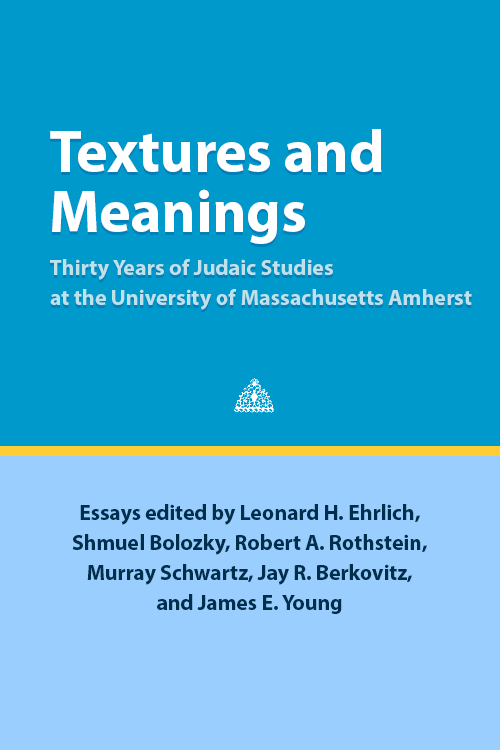"Make yourself no graven image": The Second Commandment and Judaism
Carl S. Ehrlich
This chapter is part of: Leonard H. Ehrlich et al. 2004. Textures and Meanings: Thirty Years of Judaic Studies at the University of Massachusetts Amherst
Download Chapter| Description |
|---|
| We begin with Carl S. Ehrlich’s contextualizations of the meanings of the Second Commandment. The Jewish, as opposed to Christian, division of the commandments “conveys the message that worshipping any other being or deity, other than the God who saved Israel from Egyptian slavery, is equivalent to idolatry.” This, Ehrlich reminds us, is not equivalent to a uniform prohibition on images. There was a rich Jewish iconography until the cultic reforms of Hezekiah in the late 8th century B.C.E. Only during times understood by Jews as idolatrous was there a distancing from iconographic representations. In the absence of perceived religious threat, interpretations of the Second Commandment tended to be more liberal. By reading the issue of iconographic display within its historico-religious contexts, Ehrlich shows that it was accommodation to Islam, “with its strict cultic aniconic tradition,” that occluded relative freedom of artistic expression. He then surveys a number of interpretations of the prohibition on images. In the traditional Jewish view, God acts in history, not as a being in human form. In the contemporary world, the Second Commandment can be understood as a call “to resist the apotheosis of the transient.” |
-
Details
Published Published By Aug. 1, 2004 University of Massachusetts Amherst Libraries Citation Ehrlich C. 2004. "Make yourself no graven image": The Second Commandment and Judaism. In Leonard H. Ehrlich et al. 2004. Textures and Meanings: Thirty Years of Judaic Studies at the University of Massachusetts Amherst
